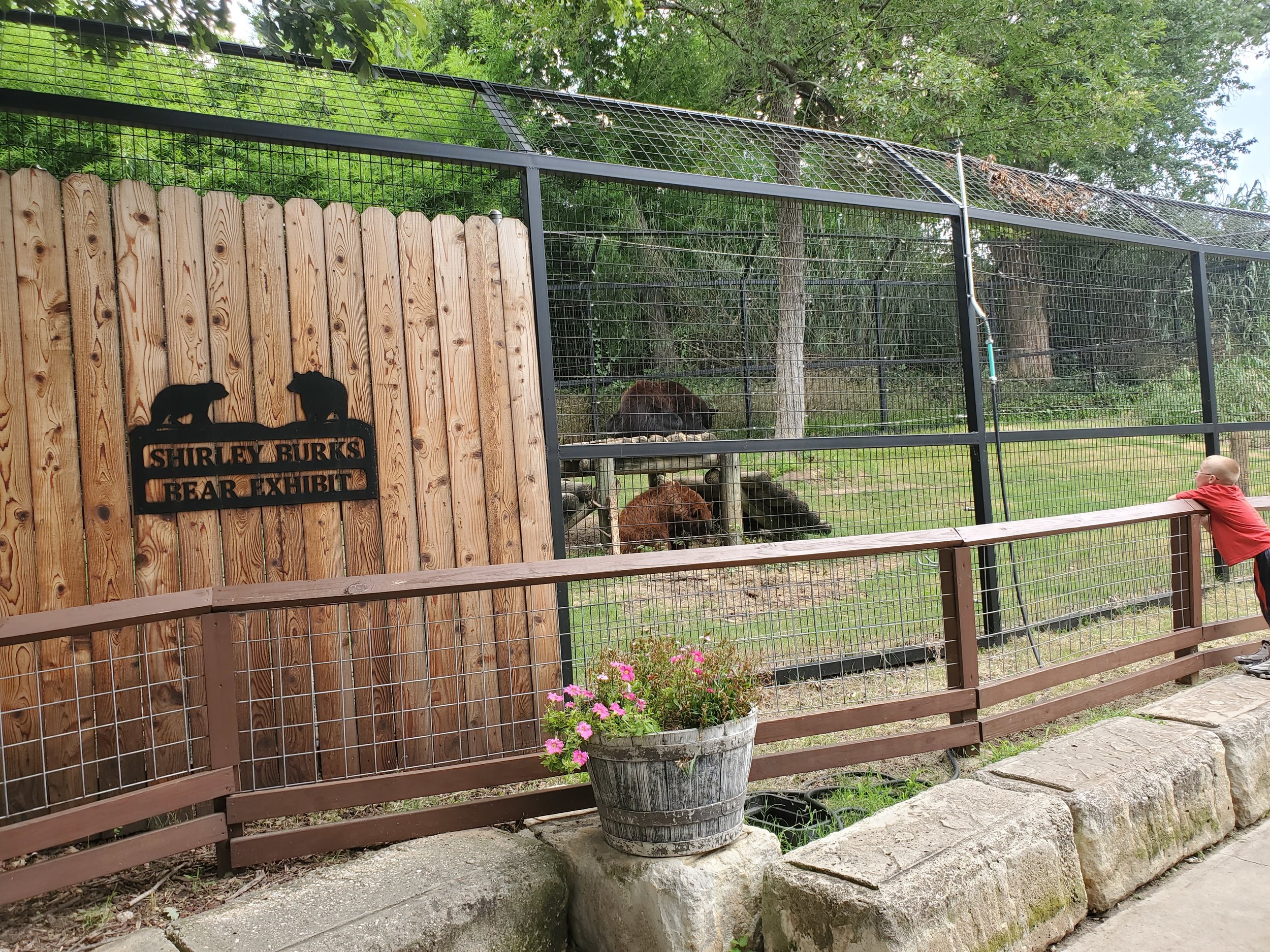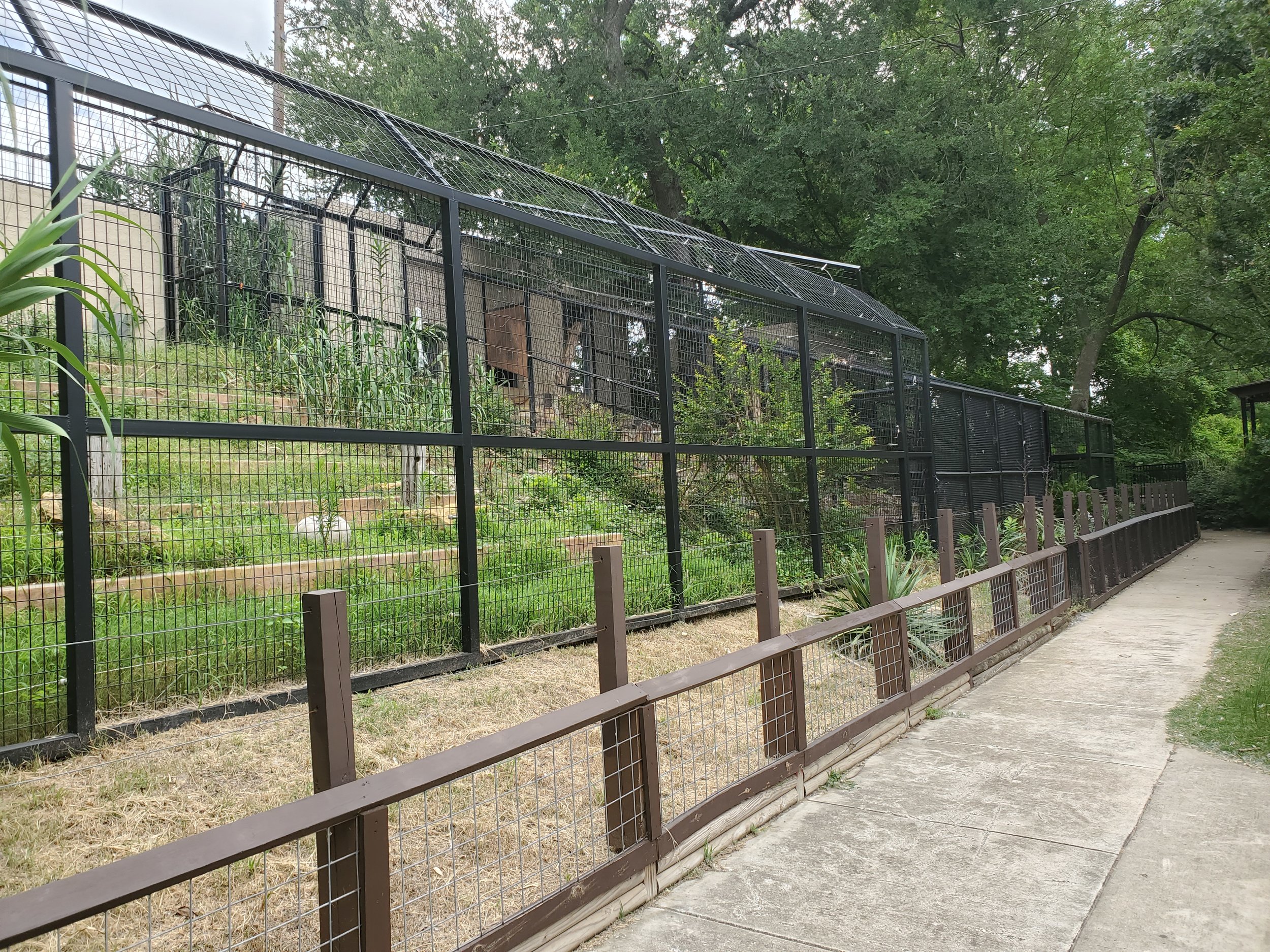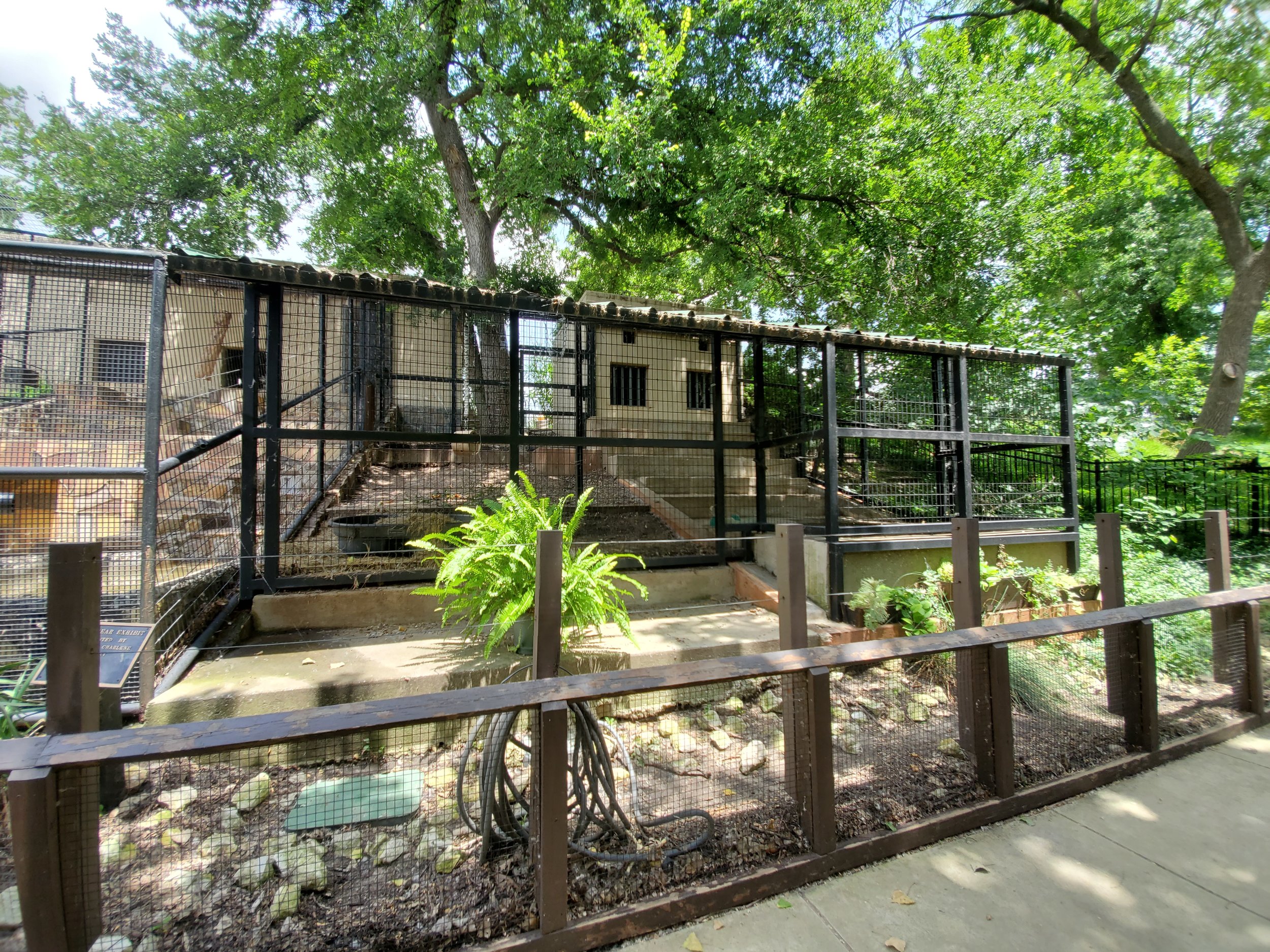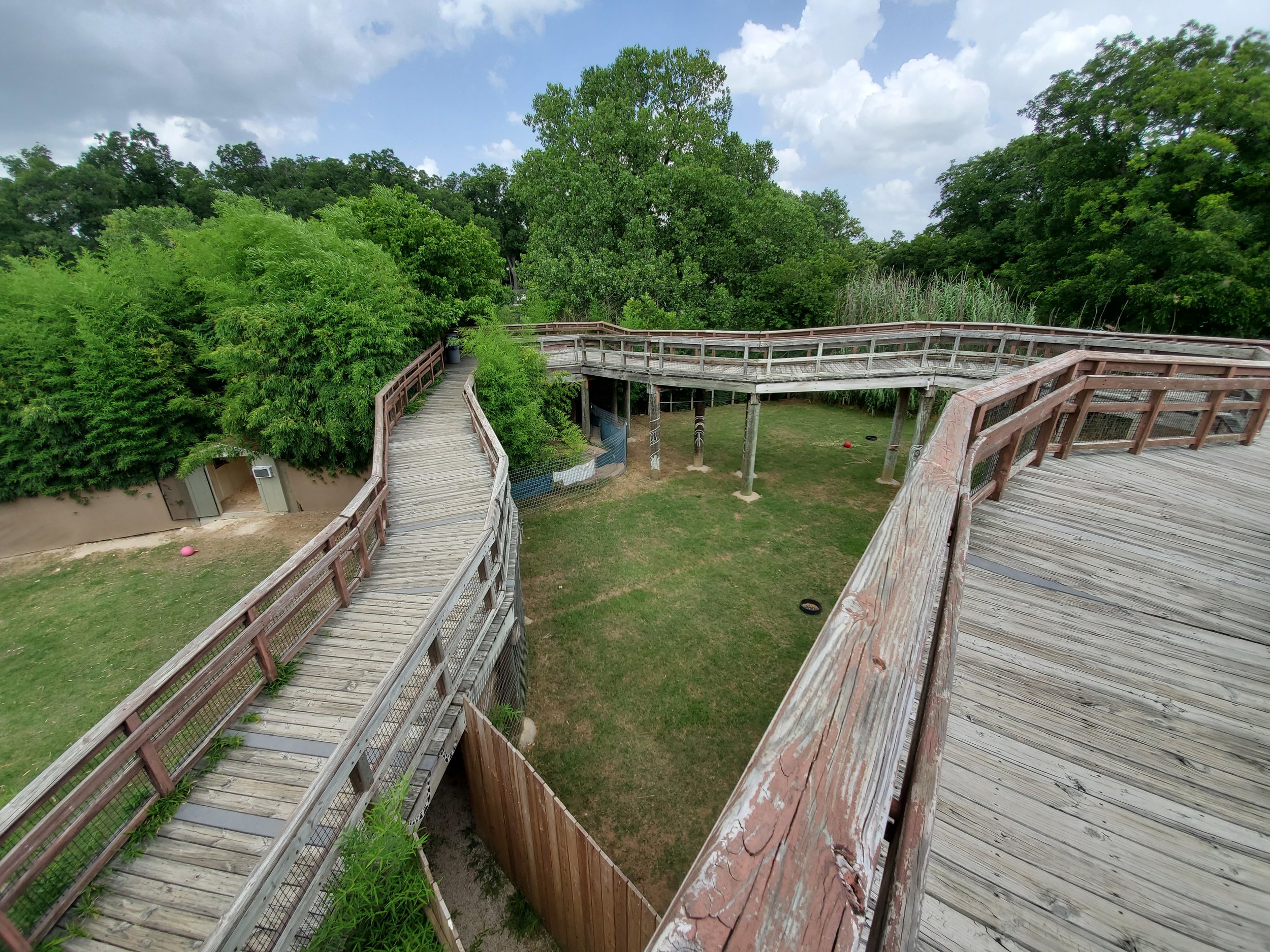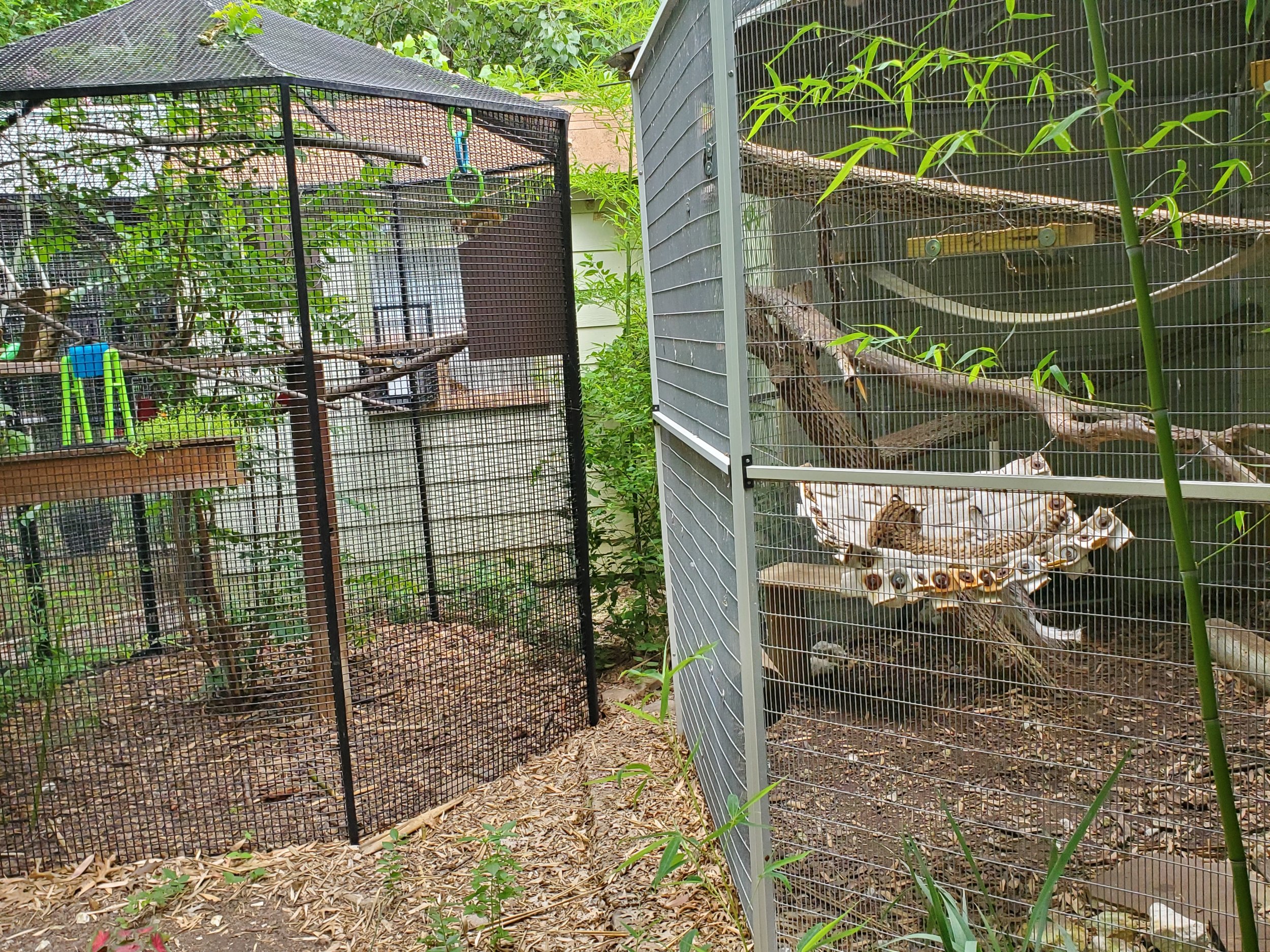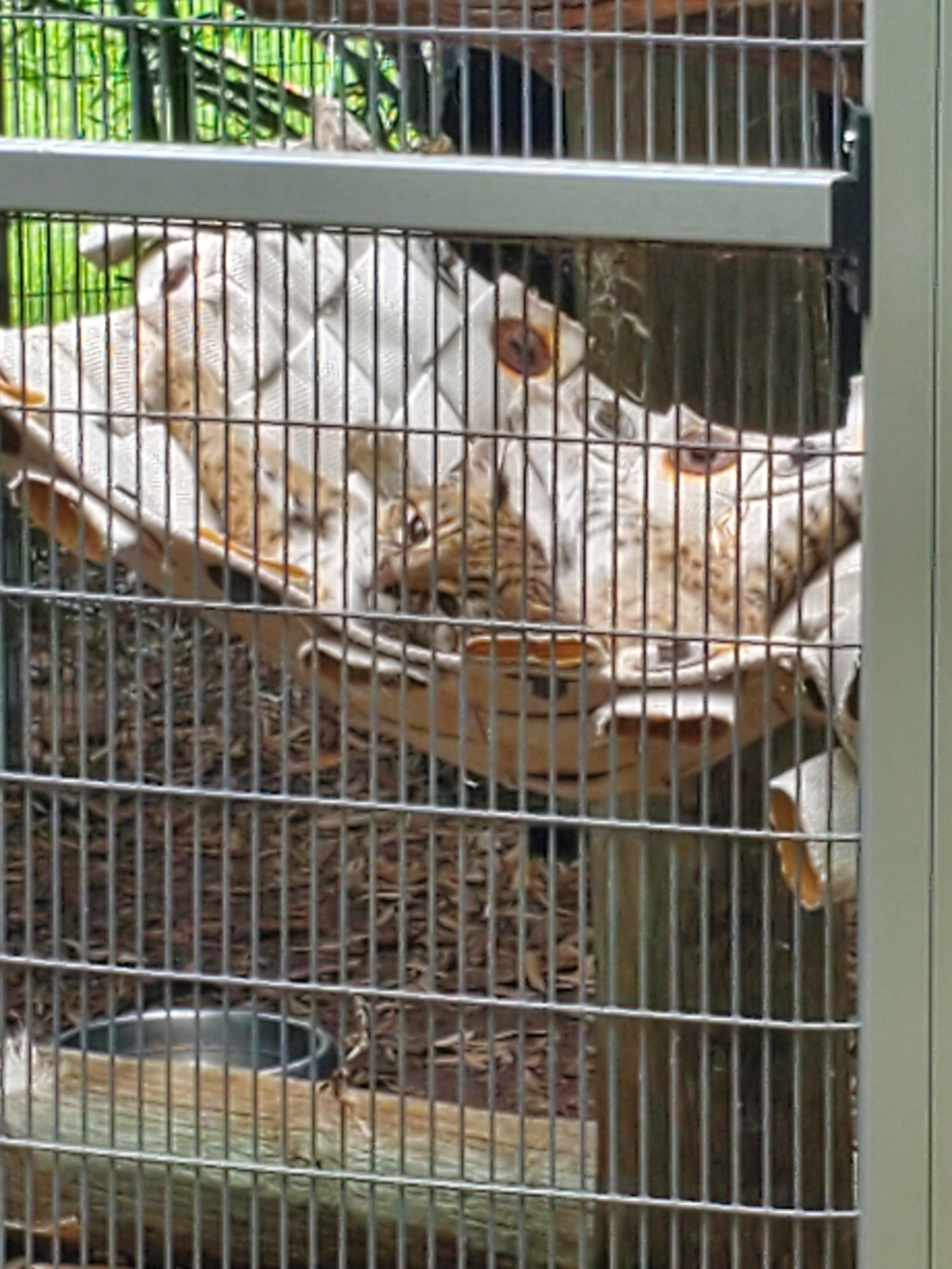Generic park building serves as entry and gift shop.
CASE STUDY: FRANK BUCK ZOO
I don’t know who Frank Buck was or why he has a zoo, but I did learn that the small town of Gainesville, Texas with its 16,000 residents supports a City-run ZAA accredited zoo that manages to draw 85,000 visitors annually! While the zoo’s success was dependent on a storied history (including famous flooding survivor Gerry, the elephant), it’s current success is dependent on the on-going re-investment by the City and the Zoo Society (it’s fundraising arm), but it’s future success will be dependent on the search for those experiences that encourage the high level of (assumed) repeat visitation experienced today. As a first-time visitor, none of this was apparent, as the 12-acre zoo feels like any City-run, ‘located in a city-park’ zoo, in any town in America.
This is a story of finding a story…
My strong philosophy about truly successful zoos revolves around the zoo “owning” a clear experience identity. The most powerful ones for small zoos, I believe, relate contextually to the place in which they reside. Whether that means taking on a historical context related to an historic town, or having a distinctly young and modern approach that reflects a forward-thinking demographic, or capturing the sense of being lost in the native woods, or on and on and on. An experience identity could be as simple as a clear consistent aesthetic. Even in zoos with immersive thematic zones, the in-between spaces (“the general zoo” aesthetic) should have a consistency to graphics, pathways, building styles and materials (not identical, but within a similar family), lighting, railings, etc. In zoos without thematic immersive areas, this style is even more important—and should also encompass how exhibits and barriers are built.
While Frank Buck Zoo is a perfectly lovely zoo, with beautiful landscaping and large (yet simple) exhibits, it’s missing a distinct character and a consistency of aesthetic. Further, pathways are confusing, despite the basic loop circulation. Another thing that’s desperately missing from the visitor experience (which could help with consistency and character) is shade. While the zoo is heavily treed, visitor paths are often without shade, and the rare use of viewing glass is obstructed by glare.
Pathway to Hell
One particular path, I lovingly nicknamed “the pathway to hell,” is essentially a hallway with exhibit barriers lining both sides in a perfectly straight line. The addition of a series of pergolas or shade cloths would break up that corridor visually and provide much needed visitor shade.
Some high points of the zoo include their very large African savanna with elevated walkway, and the utilization of the ramps down from the boardwalk to tuck exhibits between. I was fascinated with the unique species of small cats, Clouded Leopards and Geoffroy’s cat, both of which were easily located and seen in their very simple habitats. The black bear exhibit creatively reused two very old and out-dated small traditional bear pits by combining with an expanded naturalized yard providing multiple habitats, each with their own features and a variety of experiences for the bears: a grassy lawn with climbing structure; a field of sugar cane where bears could get lost visually or destroy vegetation as they like; tiers of mulch and soil between rocky retaining walls.
Having had the benefit of spending time with Susan Kleven, the director, I learned about some truly cool things the zoo is doing—which I wouldn’t have known about as a casual visitor. They do a Flamingo feeding interaction, where a few lucky guests are invited into a special area in the flamingo exhibit to hand-feed the long-necked beauties. They’re working on a capybara interaction—which I will definitely return to do! Susan showed me a video of ‘guinea pigs’ to the experience giving neck scritches to a particularly happy, half-closed-eyed capybara with neck extended to the metal scratchers guests manipulated. The goal for the zoo is to get their visitors to have safe, enriching encounters with animals, beyond just walking by a passive exhibit. This is a story! This is a point of view!
Flamingo interaction area just off the main habitat
Creating intimate moments of interaction is very achievable for a small zoo in a small town. It makes the experience repeatable for the likely high number of resident / regional visitors, and low capacity experiences in a small attendance zoo means a high percentage of visitors will get to experience at least one on their visit. The key, of course, is to ensure these experiences maintain high welfare for the animals. Additionally, these experiences provide unparalleled opportunity for messaging. If the Frank Buck Zoo continues to get creative with responsible, enriching and meaningful experiences along with physical improvements to pathways and shade, it will become a very differentiated and nationally recognized incredible guest experience.
Editor’s note: After writing this review, I googled Frank Buck. I encourage you to do the same.
